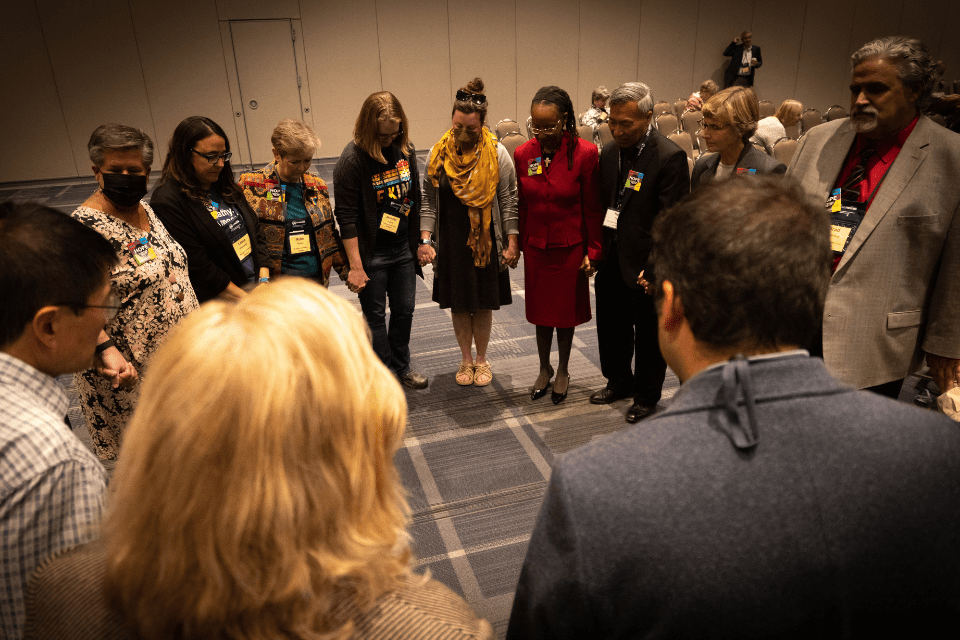In this op-ed, retired pastor Jack Harnish believes last week’s North Central Jurisdictional Conference modeled what he believes The United Methodist Church is to become.
JACK HARNISH
Retired pastor, Michigan Conference
“I wish it need not have happened in my time,” said Frodo.
“So do I,” said Gandalf, “and so do all who live to see such times. But that is not for them to decide. All we have to decide is what to do with the time that is given us.”
― J.R.R. Tolkien, The Fellowship of the Ring
“We are living through an odd space,” said Bishop David Bard in the Episcopal Address at the 2022 North Central Jurisdictional Conference. Bard acknowledged this challenging time historically, politically, and denominationally, particularly the “agonizingly protracted space of disaffiliation” by congregations seeking to depart from the denomination.
While honestly acknowledging the “odd space” we are living in, Bishop Bard held out hope for “the emerging space of what the United Methodist Church will become.” Rather than focusing on the loss of some of our congregations (unofficial estimates range from 10 to 30 percent of our churches may disaffiliate), the conference modeled a hopeful stance as they elected a diverse group of new bishops who will lead the church forward.
Michiganders can take pride in the election of Bishop Kennetha Bigham-Tsai, our endorsed candidate, on the first ballot. Her election signaled a desire across all five jurisdictions to elect bishops who would represent a diverse church, including the first Native American, Bishop David Wilson. If elected leaders model the future of the church, this year’s elections are a sign of hope in the promise of a truly inclusive church. And speaking of hopeful signs, Michiganders will also celebrate the reassignment of Bishop David Bard to the Michigan Conference. The continuity of his grace-filled leadership will continue to bless us during these uncertain times.
Beyond the election of bishops, this year’s North Central Jurisdictional Conference spent time focused on the church’s response to homophobia, transphobia, and heterosexism—not easy topics to address. But for the church to be engaged in our culture, it is important to be intentional in understanding the impact on the church. I’m grateful the delegates were able to delve into these waters with honesty and clarity.
I’ve attended many jurisdictional conferences over the years, either as a delegate, a staff member from the General Board of Higher Education and Ministry, or an observer. Now from my retirement perch on Michigan’s “little finger,” I believe Bishop Bard clearly named the odd space in which this conference gathered. No jurisdictional conference has faced the uncertainty and complexity of this present moment, a time of incredible social upheaval and not knowing exactly what the denomination will look like in the years ahead. But the great good news from Fort Wayne is that we are facing it with hope, seeking to discover a new vision and calling for our beloved church.
In the light of “fightings within and fears without” (as the old hymn says), the important question will be our vision for the emerging United Methodist Church. The spirit and actions of this conference give us a glimpse of what that church might be like—a church committed to racial justice, inclusivity, and vital witness for Jesus Christ. As easy as it would be to focus on our losses, this conference looked forward with a sense of unity and courage.
Bishop Bard’s address was filled with hopeful adjectives—capacious, spacious, gracious, creative, curious, magnanimous, evangelical, and disciple-making. “Above all,” he said, “the space we create will be and must be rooted in our faith in Jesus Christ as Lord and Savior.”
As Frodo learned, you can’t always choose the times; sometimes, the times choose you. We only have to decide how we will use the times given to us. If Bishop Bard is right, and if this conference modeled what The United Methodist Church is to become, I say hallelujah and amen!
Last Updated on November 15, 2022

